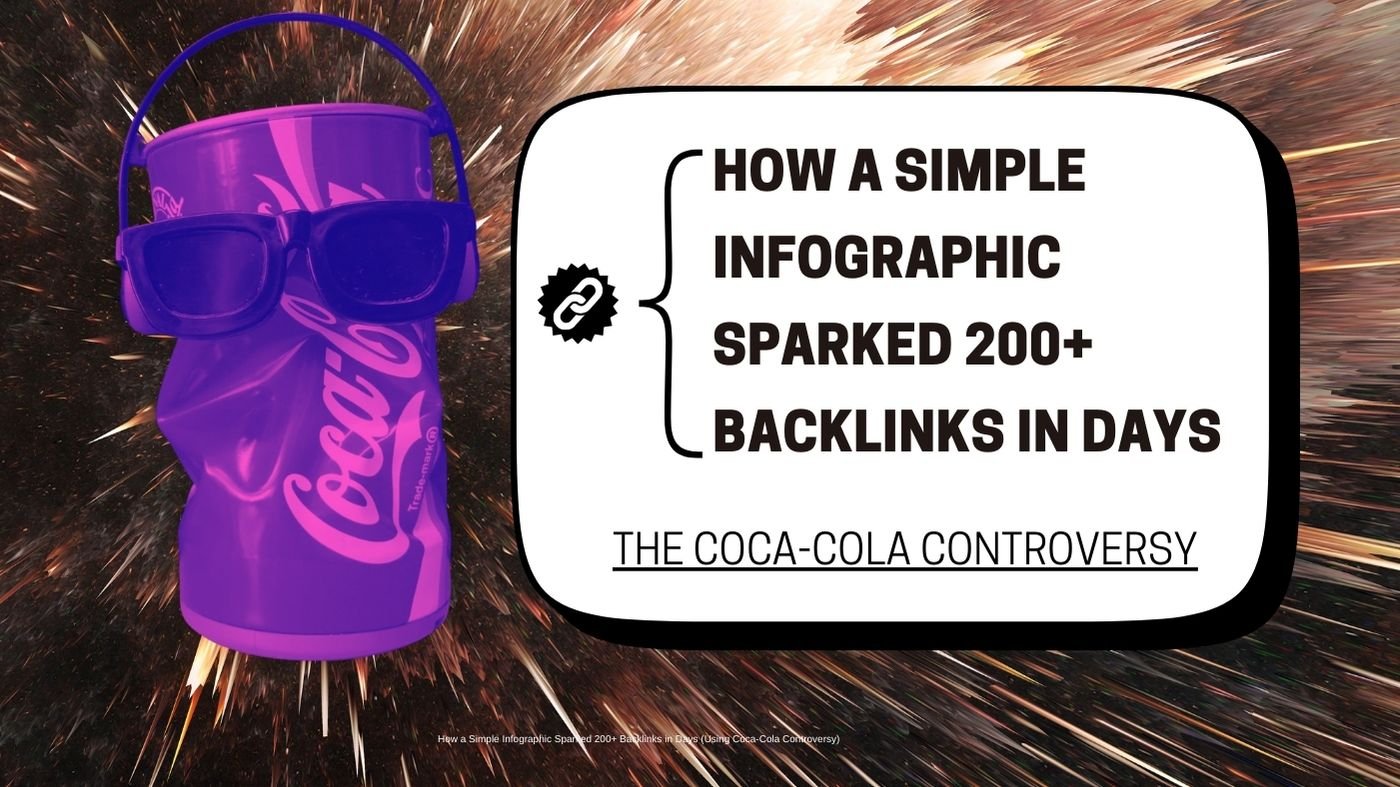
A note about this post
This post was directly inspired by an Ahrefs blog post originally published in August 2015 by David McSweeney. The blog is no longer live, but you can see the original version by visiting the Wayback Machine’s archived version. All images used below were grabbed from the archived Ahrefs post. Shout out to Ahrefs for teaching me how to broken link build on them!
Introduction
When Link Building Goes Nuclear
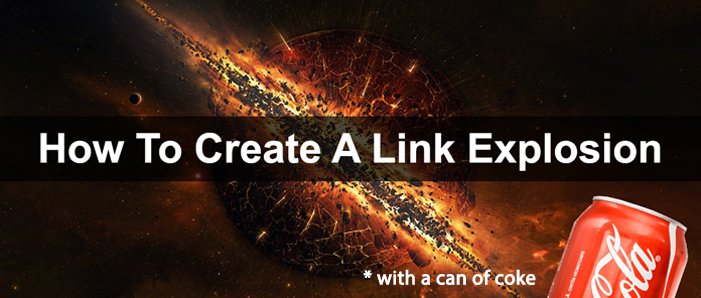
Most SEO pros know the grind. You research keywords, write content, build links, repeat. It’s slow, deliberate, and often unrewarding in the short term. But every once in a while, lightning strikes. A post goes viral. Editorial links roll in. Your domain authority climbs like a rocket.
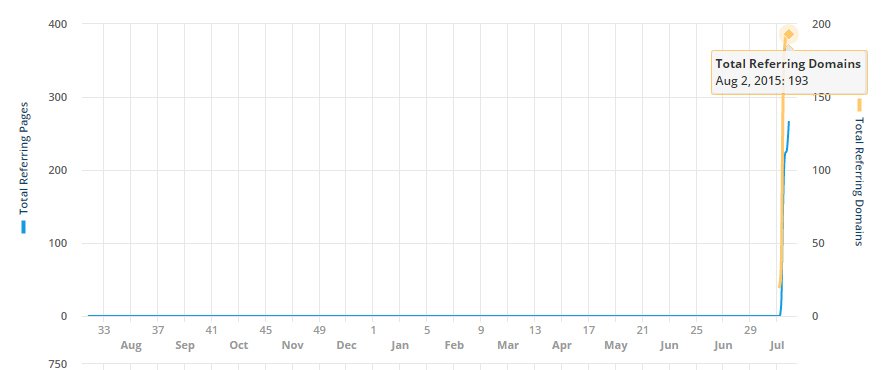
In this case study, we’re revisiting a classic viral SEO moment: how an infographic about Coca-Cola and its effects on the body earned over 200 referring domains in less than a week. But this isn’t just a throwback—it’s a breakdown of how you can replicate the formula today.
The Setup: Health, Sugar, and a Giant Brand

In May 2015, Niraj Naik of The Renegade Pharmacist published an article titled “What Happens One Hour After Drinking A Can Of Coke.” The post featured a colorful infographic outlining the supposed bodily effects of Coke within the first 60 minutes.
The information came from an old blog post by Wade Meredith on Health Bolt, long since vanished from the web. Niraj turned it into a visual asset, paired it with a short writeup, and hit publish.
And for two months—nothing happened.
Ingredient #1: The Infographic
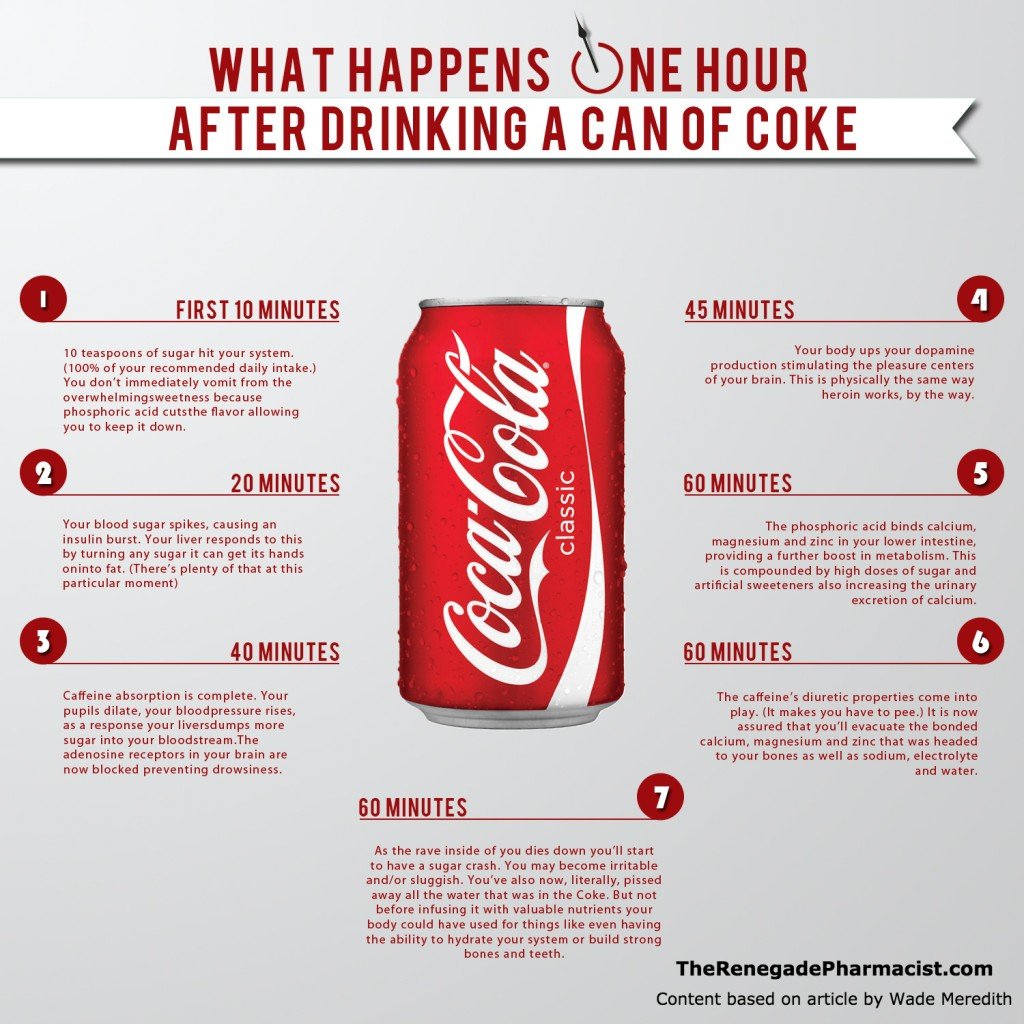
The graphic was clean, easy to read, and hit on health fears that had been brewing in the public consciousness for years. Sugar. Caffeine. Blood sugar spikes. Insulin chaos. It read like a nutritional horror story.
But good content needs eyeballs.
Ingredient #2: The Right Share in the Right Place
On July 29th, 2015, the post was shared to Reddit in a high-traffic subreddit called r/interestingasfuck. The original thread has since been deleted, but the impact is undeniable.


According to Ahrefs, 12 new referring domains popped up that day. It seems that the Reddit post kicked off a chain reaction.


Ingredient #3: A Hyper-Emotive Topic

This post wasn’t about Coke. It was about health. It was about what you’re putting in your body. It was about the evil of sugar. And it was about a global brand.
When your topic lives at the intersection of health, emotion, and controversy—you’re sitting on viral potential. The press took notice.
Ingredient #4: Mainstream Media Pickup

Once the Reddit thread took off, traffic surged. Facebook shares crossed 16,000.
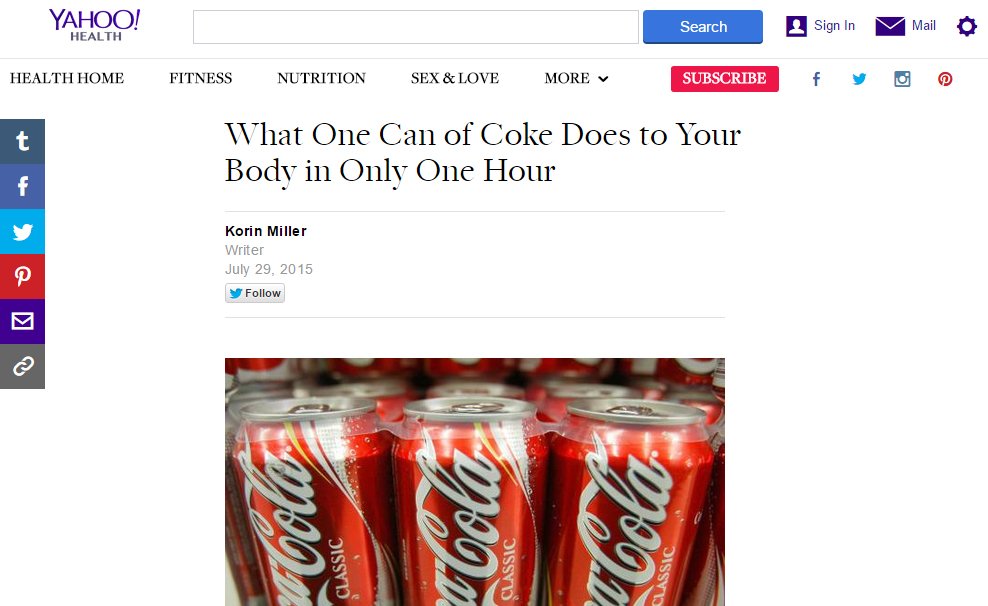
Yahoo picked it up. Huffington Post ran with it. Even Playboy linked it.
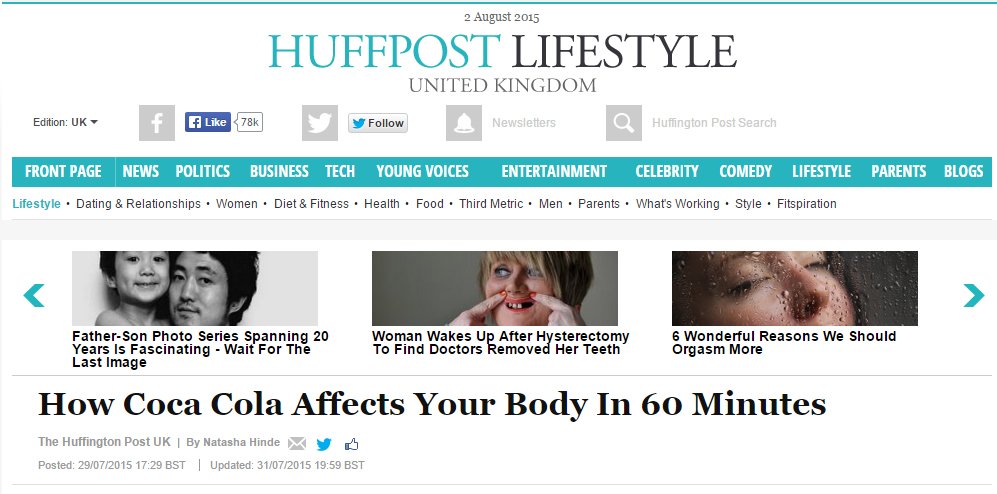
And here’s the SEO gold: these weren’t links from blog comments or low-tier news aggregators. These were real, editorial, in-content links.
Ingredient #5: Controversy (and Corrections)

Not everyone was thrilled. Buzzfeed published a rebuttal, quoting scientists who disputed the infographic’s claims. The post, they said, was exaggerated.

But it didn’t matter. The controversy amplified the post.



Suddenly, the conversation wasn’t just about Coke—it was about misinformation, science vs. pseudoscience, and who to trust. And Buzzfeed linked to the original post.
Bonus Ingredient: A Brand’s Nightmare, A Marketer’s Dream
Big brands don’t like bad press. The viral spread may have triggered Coca-Cola’s PR radar. Whether or not they pushed out counter-narratives or paid coverage, we’ll never know.
What we do know is this: sparking the ire of a billion-dollar company will get you attention. Tread carefully—but know that heat attracts links.
The Results: Traffic, Links, Authority
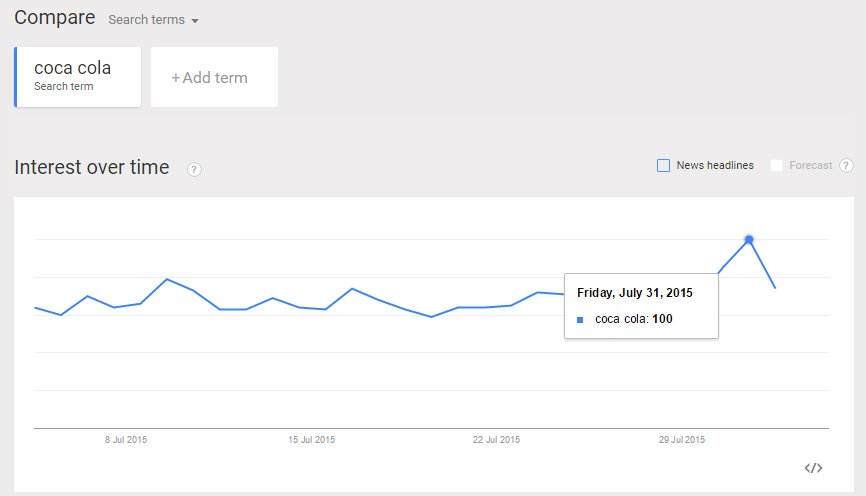

According to Ahrefs and Google Trends:
- Organic traffic spiked massively starting July 31st.
- Searches for “coca cola” increased in parallel with the infographic’s spread.
- The site picked up 200+ high-authority links in less than a week.
The Takeaway: Reverse Engineering the Link Explosion
This wasn’t magic. It was a formula. Here’s how to recreate it:
- Create an eye-catching asset — Infographics still work, especially if you’re simplifying complex or emotional topics.
- Find an emotional, current angle — Health, politics, parenting, money, safety. People share what they feel.
- Post in high-leverage communities — Reddit, X/Twitter threads, niche FB groups, LinkedIn comment sections.
- Don’t fear controversy — But be factual. If your post sparks debate, that’s link fuel.
- Watch for press pickup — Use Ahrefs Alerts or Mention to monitor spikes.
Want to Ride the Next Wave?
Here’s a pro move: monitor viral infographics that hit it big. Then create:
- A follow-up (“Where Are They Now”)
- A rebuttal (“Here’s What the Science Actually Says”)
- A better version (“Updated for 2025”)
Then reach out to the sites that linked the old one—especially if the original page is dead. That’s a golden broken backlink building opportunity. After all… that’s what I did with this blog post. 😉
Final Word
Viral link building is rare—but it’s not random. It’s the result of hitting the right emotional note, at the right time, with content worth sharing.
If you want to replicate this, focus less on volume and more on velocity. Go deep. Go emotional. And aim for earned media, not just SEO wins.
Now go cook up your own link explosion.
Need help?
I build websites and SEO strategies that attract attention—and backlinks. Reach out if you’re ready to get found.
